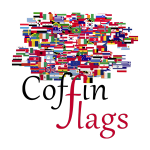Description
 Nepal, officially the Federal Democratic Republic of Nepal, is a landlocked country in South Asia. It is located mainly in the Himalayas but also includes parts of the Indo-Gangetic Plain. With an estimated population of 26.4 million, it is the 48th largest country by population and the 93rd largest country by area. It borders China in the north and India in the south, east and west while Bangladesh is located within only 27 km (17 mi) of its southeastern tip and Bhutan is separated from it by the Indian state of Sikkim. Nepal has a diverse geography, including fertile plains, sub-alpine forested hills, and eight of the world’s ten tallest mountains, including Mount Everest, the highest point on Earth. Kathmandu is the capital and the largest city. Nepal is a multi-ethnic country with Nepali as the official language.
Nepal, officially the Federal Democratic Republic of Nepal, is a landlocked country in South Asia. It is located mainly in the Himalayas but also includes parts of the Indo-Gangetic Plain. With an estimated population of 26.4 million, it is the 48th largest country by population and the 93rd largest country by area. It borders China in the north and India in the south, east and west while Bangladesh is located within only 27 km (17 mi) of its southeastern tip and Bhutan is separated from it by the Indian state of Sikkim. Nepal has a diverse geography, including fertile plains, sub-alpine forested hills, and eight of the world’s ten tallest mountains, including Mount Everest, the highest point on Earth. Kathmandu is the capital and the largest city. Nepal is a multi-ethnic country with Nepali as the official language.
The national flag of Nepal is the world’s only non-quadrilateral flag (printed by us in a quadrilateral shape in order to fulfil its purpose as a coffin drape) that acts as both the state flag and civil flag of a sovereign nation. The flag is a simplified combination of two single pennons (or pennants), known as a double pennon. Its crimson red is the symbol of bravery and it also represents the colour of the rhododendron, Nepal’s national flower, while the blue border is the colour of peace. Until 1962, the flag’s emblems, the sun and the crescent moon, had human faces, but they were removed to modernise the flag. The crimson red indicates the bravery of Nepali people and is the country’s national colour and the blue border represents peace and harmony. The colours are often found in Nepalese decorations and works of art. The inclusion of the celestial bodies indicates Nepal’s permanence and the hope that Nepal will enjoy the same longevity as the Sun and the Moon. Additionally, the stylised moon represents the calm demeanour and purity of spirit of the Nepali people, while the stylised sun represents their fierce resolve. Further, the moon also symbolises the cool weather of the Himalayas, whereas the sun symbolises the heat and the high temperature of the Nepali lowlands (Terai).







